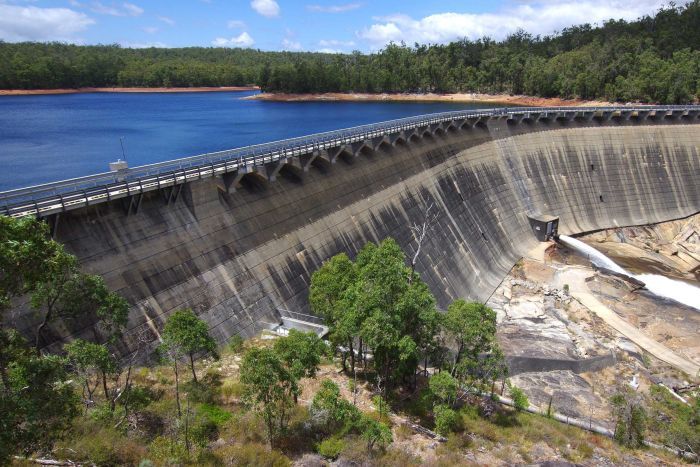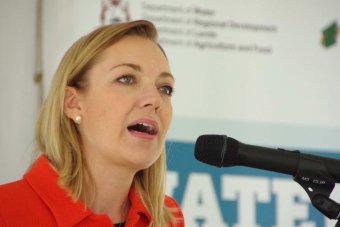Wellington Dam desalination plan to boost local agriculture
Posted
 Photo:
Salinity in Wellington Dam has rendered it useless for farmers near Collie and Myalup. (ABC News: Andrew O'Connor)
Photo:
Salinity in Wellington Dam has rendered it useless for farmers near Collie and Myalup. (ABC News: Andrew O'Connor)
The Barnett Government hopes a private sector-led project diverting flows from the Collie River and using desalination will help boost agricultural production in the south west.
The Government has committed $37 million to the $380 million project to overcome salinity problems in Wellington Dam, using private sector and federal funding.
Under the proposal, saline water from the Collie River would be diverted and desalinated, providing a fresh water supply for local farmers.
Speaking at Wellington Dam on Thursday, Premier Colin Barnett said the move would also help drop salt levels in the dam itself.
"Taking that salt water away from Wellington Dam will mean that quite quickly, over two or three years, maybe a little longer, the salinity level in the dam will drop by over 50 per cent," he said.
With a capacity of 185 gigalitres, Wellington Dam is the state's second largest surface water reservoir.
But that water has been rendered virtually useless to farmers in the Collie and Myalup irrigation areas due to the rising salinity.
Water Minister Mia Davies said salinity had had a damaging impact on agricultural production.
"The salinity of the water that feeds the irrigation areas of Collie River is so high that less than 7,000 hectares of the available 35,000 hectares is used productively," she said.
"Farmers in that region are just not choosing to irrigate or they are restricting to low value crops."
Plan a 'breakthrough on long-running problem'
Under the Myalup-Wellington Water for Food project, the Government would provide initial funding for an initiative known as the Collie Water Solution.
Proposed by private group Collie Water, it would see highly saline water from the Collie River diverted into a disused mine void, before being desalinated at a privately owned plant to be built near Collie.
 Photo:
Mia Davies said the desalination plan was a breakthrough for the region's farmers. (ABC News: Andrew O'Connor)
Photo:
Mia Davies said the desalination plan was a breakthrough for the region's farmers. (ABC News: Andrew O'Connor)
Ms Davies said the proposal was a breakthrough on a long-running problem which had defied attempts to find a sustainable and economically viable solution.
"Much work has been done in the past on trying to resolve this and we know from a research and scientific point of view that there's always been the possibility of reducing the salinity in the dam," she said.
"But the economics in terms of how much it costs to get the water to end users has always been the sticking point."
Once operational, the plant would supply between 10 and 20 gigalitres of fresh water, making it available for irrigation in the region.
The Burekup Weir would be moved further upstream to hold water on higher ground, allowing it to be gravity-fed to farmers.
Ms Davies said along with the state and private sector funding, the project would require substantial Commonwealth input.
"Certainly I am confident that they are aware that this is our number one priority," she said.
"There is a funding round available at the moment. It closes in March. And we will have an application going in for funding from the Commonwealth."
Topics: irrigation, water-management, collie-6225







